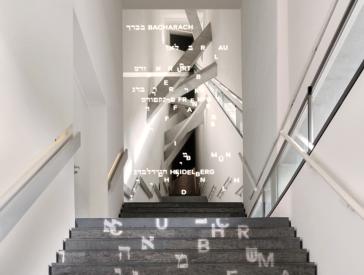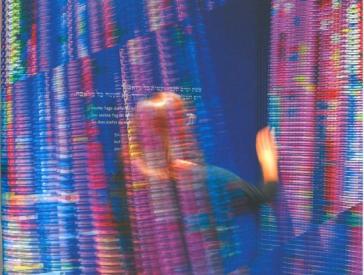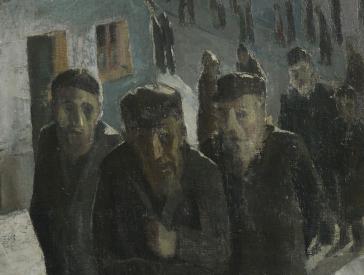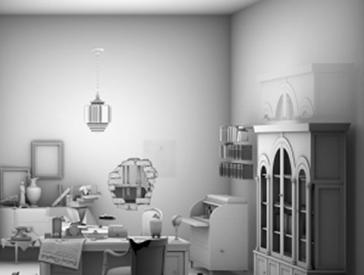
Each Object
a Universe
Portraits of Our Conservators and Workshops
Many of the objects in our collections bear traces of their own history. They have survived hiding places, emigration, and decades of storage. Our conservators ensure that the valuable paintings, documents, cultural artifacts, and textiles are preserved and can be shown in the museum. We profile them in their workshop.
Portraits of Our Conservators

Sometimes a painting may look unremarkable—but it may still be very exciting for us to work on it: changes in the material affect the appearance and stability of a work of art, and may cause its original intention to become illegible. In the context of a conservation treatment, we research the reasons for the damage, generate a plan, and draw up a series of tests in order to bring the painting back into a “legible” condition—as the artist intended it.
Barbara Decker, painting conservator; Jewish Museum Berlin, photo: Stephan Pramme
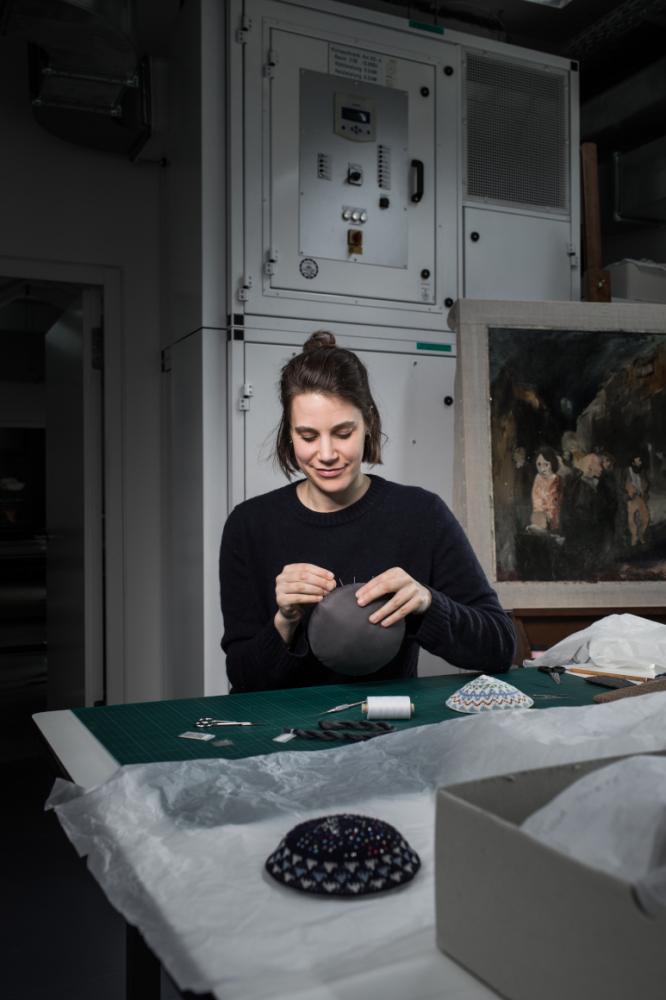
When I show people the results of my work, they’re often confused, because the fabric still looks old, not attractive or new again. This seems strange to everyone, particularly with textiles, because the fashion industry is so fast-moving. Take the following example: the sparkling stones on a female rabbi’s kippah form the Magen David, but many are missing. The question is: should I replace them or preserve the kippah in its current state? When I’m given a historical fabric, I do everything I can to preserve it. If I succeed, it’s a great feeling.
Ava Hermann, textile conservator; Jewish Museum Berlin, photo: Stephan Pramme
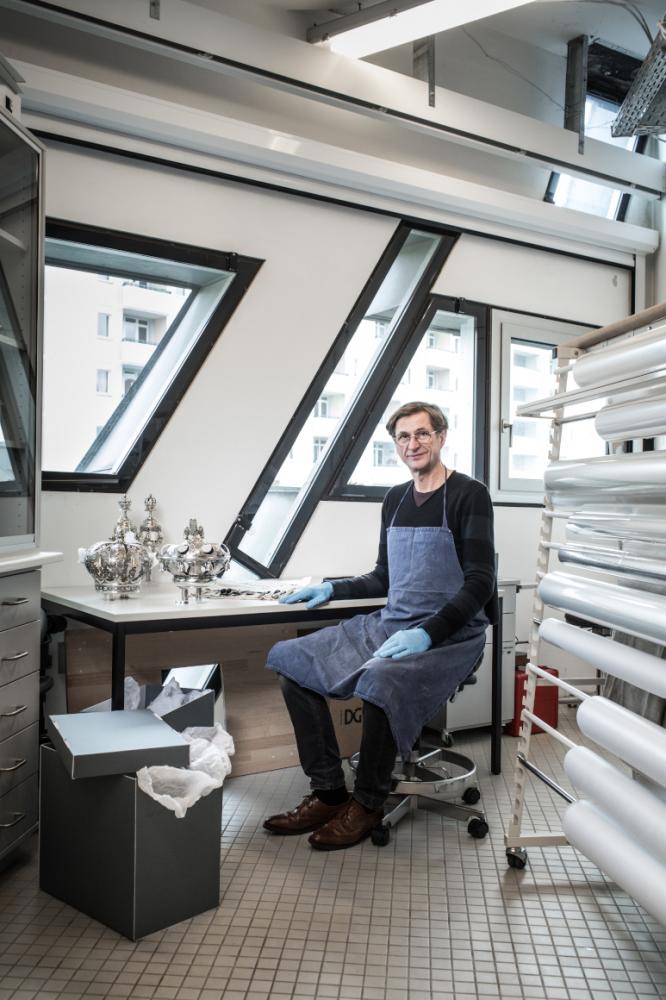
The objects I work on aren’t ancient finds, but Judaica and objects made from silver and other metals from more modern periods. I immerse myself in the world of every object and always discover new stories and questions. You can see what it was used for and discover old repairs or stamps. Traces of the past must remain intact, such as oil residue or candle wax on Judaica. While treating an object, you need to set limits and focus on the history of the object in order to preserve this history in a comprehensible way. Sometimes one extra step is one step too many.
Rüdiger Tertel, metals conservator specialized in the applied arts; Jewish Museum Berlin, photo: Stephan Pramme
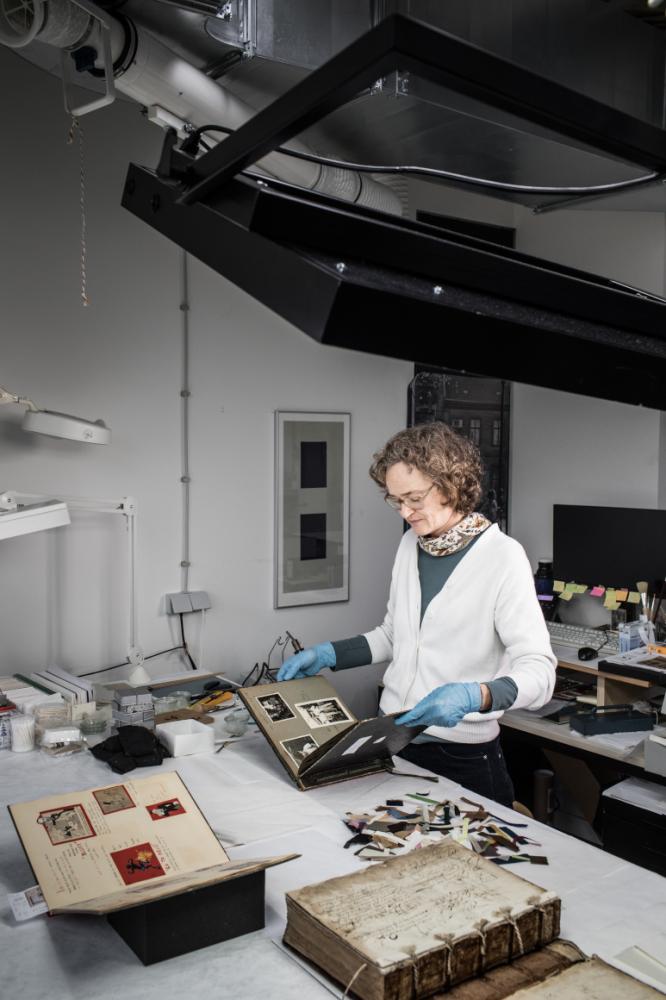
I treat objects, mainly using Japanese paper and paste: books, documents from the archives, boxes, and art on paper such as graphic works and paintings. The visual effect is what’s important for flat sheets. But you have to be able to take a book in your hands and leaf through it. So I check to make sure: Is the binding stable? Are the pages loose or folded? Are there tears or losses? In exhibitions, objects are provided with mountings that are discreet but stable. We’re also responsible for that, making sure that the items on display emerge from the exhibition undamaged.
Gesine Siedler, book and paper conservator; Jewish Museum Berlin, photo: Stephan Pramme
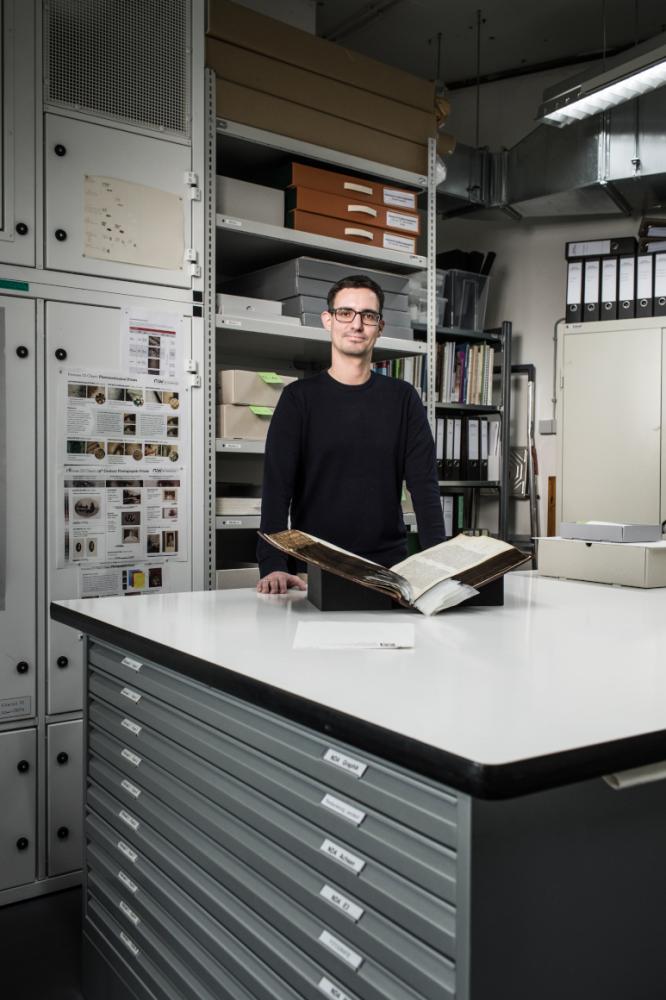
The oldest object in our collection is the “Sefer Sinai,” a parchment manuscript from 1391. Only a few ancient Jewish objects have survived the ravages of the centuries. The parchment and the writing are in very good condition. Even after six hundred years, the Hebrew lines are still legible. Conservation doesn’t mean making everything new and shiny again, but stabilizing the available material, which in my case is paper. Treatments are not always necessary. What’s much more important is proper storage and the right climate conditions.
Stephan Lohrengel, paper conservator; Jewish Museum Berlin, photo: Stephan Pramme
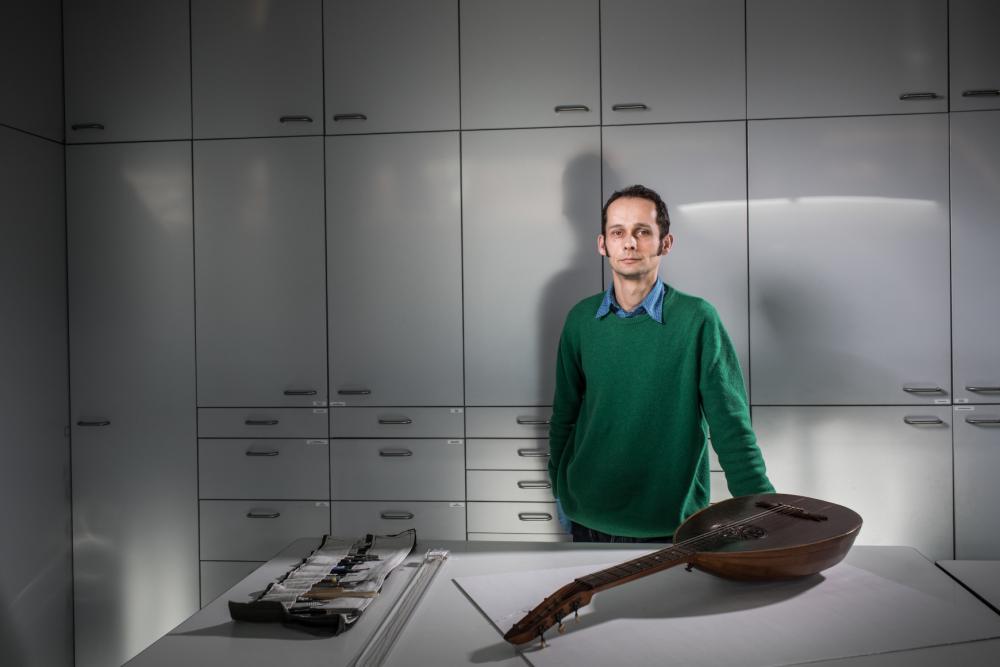
I work primarily with plastics, natural fibers, wood, and metal in combination with other materials. The objects include typewriters, film projectors, furniture, and, in rare cases, musical instruments. For the core exhibition, I treated Rabbi Erwin Zimet’s lute. He played it at the Jewish convalescent home for poor women and their children in Lehnitz. When Zimet emigrated to England in November 1938, he took the lute with him. What fascinates me about this instrument is its beauty and the fact that it’s a very old type of instrument that symbolizes the early influences of the Middle East on Germanspeaking countries.
René Otto, conservator of wooden objects, modern materials, and technical cultural objects; Jewish Museum Berlin, photo: Stephan Pramme
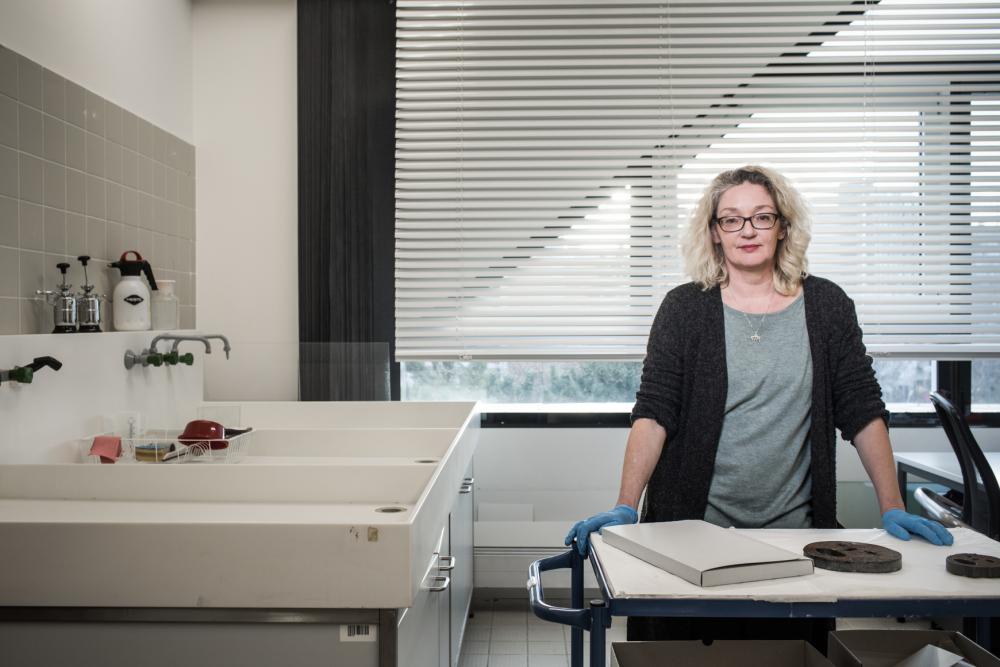
My favorite object in the new exhibition is the work “archiv” by Edmund de Waal. I got to know it in great detail because I created a storage solution that holds each of the small, fragile pieces securely: the tiny porcelain shards, bowls, and alabaster plates. It also makes clear where each piece belongs in the work. Inspecting, sorting, and classifying the fine shards, some of which have gilt edges, is precisely what I regard as memory work. It is closely linked to my profession, in which I sort things in an institution of memory—this museum.
Regina Wellen, storage administrator; Jewish Museum Berlin, photo: Stephan Pramme
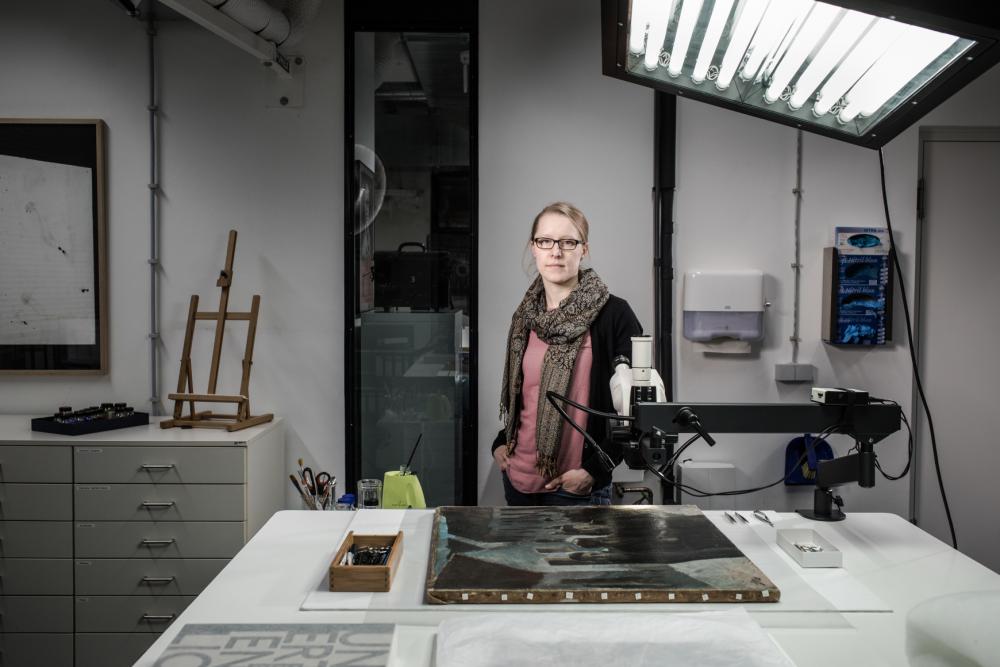
In order to understand a painting, I examine it in great detail. Only afterward do I undertake conservation or preservation treatments. I sometimes discover special features such as fingerprints in the paint. These accidental finds give me the feeling of being closely connected to the artist’s creative process. The canvas of the painting “On the Way to the Prayer House” by Jakob Steinhardt was badly damaged and had numerous tears. I stabilized these under the microscope by gluing the torn threads together.
Franziska Lipp, conservator of paintings and polychrome sculptures; Jewish Museum Berlin, photo: Stephan Pramme
This photo series was produced in 2020 as a supplement to issue 21 of the print edition of the JMB Journal.
